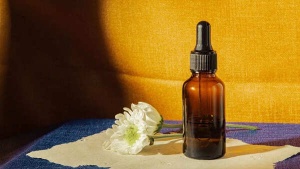The bedroom, envisioned as a sanctuary for rest and rejuvenation, can surprisingly harbor hidden dangers. While obvious hazards are easily avoided, subtle threats often lurk unnoticed, posing significant health risks. Here are five common bedroom dangers and practical steps to mitigate them.
While your mattress may seem comfortable, its age can be deceptive. Mattresses older than 7-8 years can become breeding grounds for sweat, dead skin cells, dust mites, mold, and bacteria. Regular vacuuming offers insufficient cleaning, leading to a toxic environment inhaled nightly.
This is especially concerning for seniors with weakened immune systems. Studies indicate that old mattresses release harmful chemicals and allergens, potentially causing skin rashes, respiratory issues, and exacerbated allergies.
Solution: Replace your mattress every 7-10 years. Opt for mattresses made with non-toxic materials like organic latex or memory foam. Employ a waterproof mattress protector to ward off sweat and dust mites, and vacuum the mattress routinely.

Pillows and bedding are prime habitats for dust mites, microscopic creatures thriving on dead skin cells. Dust mites are known to trigger allergies, asthma, and skin irritation. They can also contribute to respiratory problems, potentially leading to lung complications. Over time, old pillows accumulate dust mites, sweat, and allergens, making them a significant yet overlooked health risk.
Solution: Wash bedding weekly in hot water to eliminate dust mites. Replace pillows every 1-2 years and use hypoallergenic pillowcases.

Many rely on air fresheners to maintain a pleasant bedroom scent. However, these products often contain harmful chemicals known as phthalates. Phthalates can disrupt hormonal balance and potentially cause reproductive harm. Regular use of synthetic air fresheners can degrade indoor air quality and silently compromise your health, potentially triggering migraines and allergies.
Solution: Avoid air fresheners entirely, reserving their use for bathrooms if necessary. Instead, ventilate the room with fresh air by opening windows or use natural alternatives like essential oils.

Exposure to artificial light sources near the bed, particularly blue light emitted from digital clocks, smartphones, and LED bulbs, can disrupt your sleep cycle by suppressing melatonin production, the hormone regulating sleep. This effect is particularly detrimental for older adults, who are more sensitive to light exposure at night. Disrupted sleep patterns due to artificial light elevate the risk of heart disease, diabetes, and even certain cancers.
Solution: Implement blackout curtains to ensure darkness and use dim, warm-colored lights in the evening. Keep electronic devices away from your bed.

Mold thrives in damp environments and can remain undetected until health problems arise. Mold spores circulating in the bedroom air can trigger asthma attacks, allergies, and respiratory infections. Exposure to mold can be especially dangerous for seniors and individuals with weakened immune systems, potentially leading to severe health consequences. Mold can also exacerbate skin conditions and contribute to systemic inflammation affecting joints and the heart. Mold is most commonly found in homes lacking adequate natural light.
Solution: Inspect your bedroom for signs of mold, such as water stains, peeling paint, or musty odors. If mold is detected, contact a professional for safe removal.

Older articles
 Rishabh Pant's Fearless Batting Revolutionizing Test Cricket, Says Greg Chappell
Rishabh Pant's Fearless Batting Revolutionizing Test Cricket, Says Greg Chappell
 Gavaskar Calls for Kuldeep Yadav's Inclusion Amid Bumrah Fitness Concerns Ahead of Second England Test
Gavaskar Calls for Kuldeep Yadav's Inclusion Amid Bumrah Fitness Concerns Ahead of Second England Test
 Mirabai Chanu: Weightlifting Star's Relentless Focus Extends Beyond the Gym
Mirabai Chanu: Weightlifting Star's Relentless Focus Extends Beyond the Gym
 Former Selector Blasts India's Fielding Woes After Test Defeat to England
Former Selector Blasts India's Fielding Woes After Test Defeat to England
 Is Facial Icing Right for You? Exploring Benefits, Risks, and Safe Practices of the Viral Beauty Trend
Is Facial Icing Right for You? Exploring Benefits, Risks, and Safe Practices of the Viral Beauty Trend
 Sharma Details 'Heart-in-Mouth' Moment as Yadav's Gravity-Defying Catch Fuels India's T20 World Cup Run
Sharma Details 'Heart-in-Mouth' Moment as Yadav's Gravity-Defying Catch Fuels India's T20 World Cup Run
 Hair Oil vs. Hair Serum: Which Treatment is Best for Your Hair Type? A Complete Guide
Hair Oil vs. Hair Serum: Which Treatment is Best for Your Hair Type? A Complete Guide
 Nitish Rana Eyes Delhi Return After Disappointing Uttar Pradesh Stint
Nitish Rana Eyes Delhi Return After Disappointing Uttar Pradesh Stint
 Smith Targets Test Return After Baseball Cage Recovery Stint
Smith Targets Test Return After Baseball Cage Recovery Stint
 Prithvi Shaw Admits to Missteps, Vows Cricket Comeback After Career Setbacks
Prithvi Shaw Admits to Missteps, Vows Cricket Comeback After Career Setbacks